Brake pads manufacturing
Brake pads are a vital component in any vehicle's braking system. They are responsible for providing the friction that allows a vehicle's brakes to slow down and stop the wheels from turning. Brake pads are made up of various materials that when pressed against the brake disc rotor, create enough friction to convert the kinetic energy of the vehicle into heat energy. This heat energy is then dissipated through the brake system.
Brake pads serve a crucial safety purpose in vehicles. Without properly functioning brake pads, drivers would be unable to stop their vehicles in a safe and controlled manner. This would lead to vehicles not being able to come to a halt at stop signs or traffic lights. It would also prevent vehicles from slowing down when needed to avoid collisions. Properly manufactured and well maintained brake pads are essential for the safe operation of any vehicle on the roads.
Over the decades, improvements in brake pad materials and design have led to brake pads that are quieter, produce less brake dust, and are more durable. While the fundamentals of how brake pads operate has remained the same, advancements in manufacturing methods and testing have improved the consistency and performance of modern brake pads. Understanding the manufacturing process, testing procedures, and applications of brake pads provides insight into this key automotive safety component.
SEMIMETALLIC BRAKE PADS
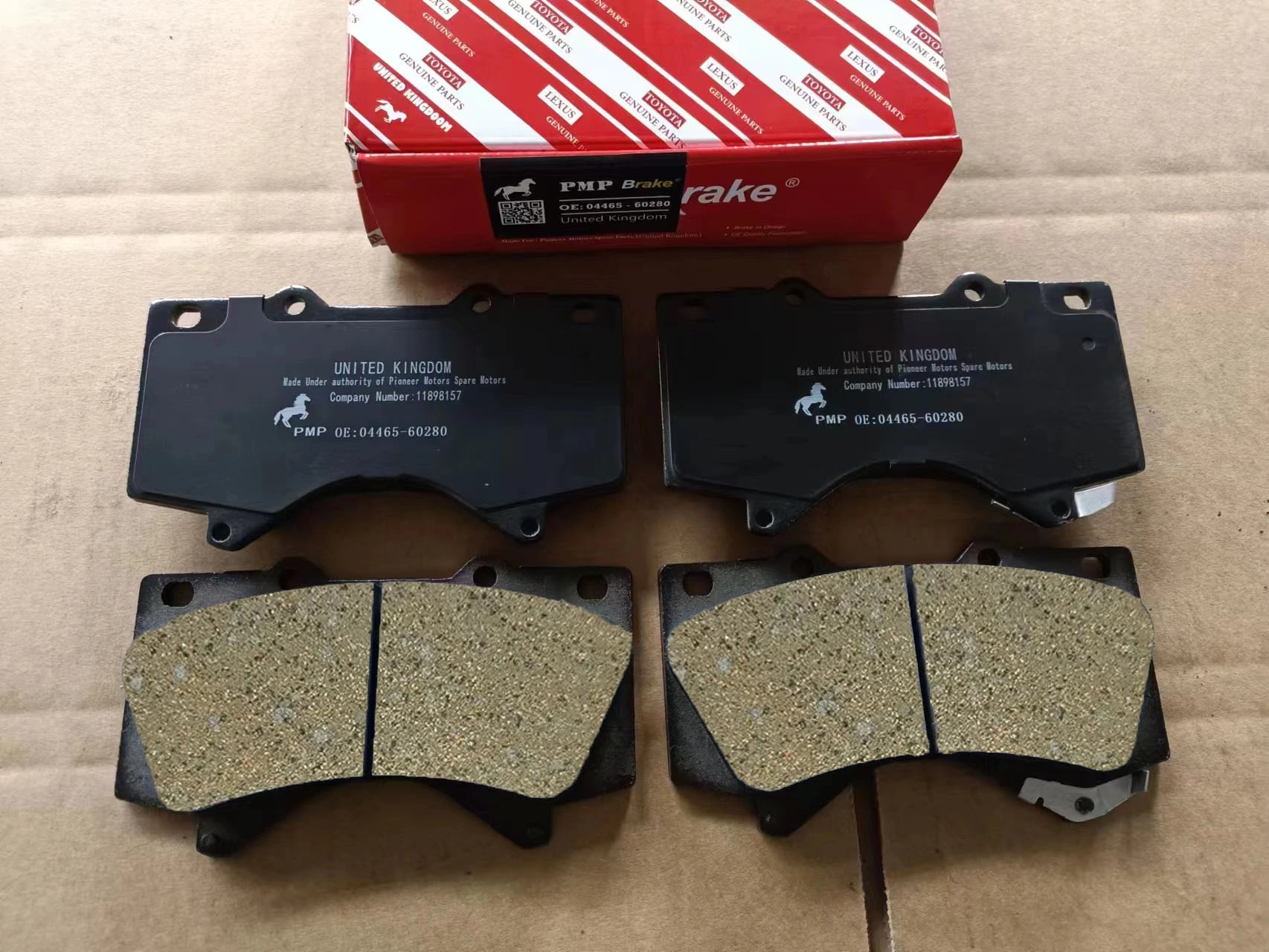
SEMIMETALLIC BRAKE PADS
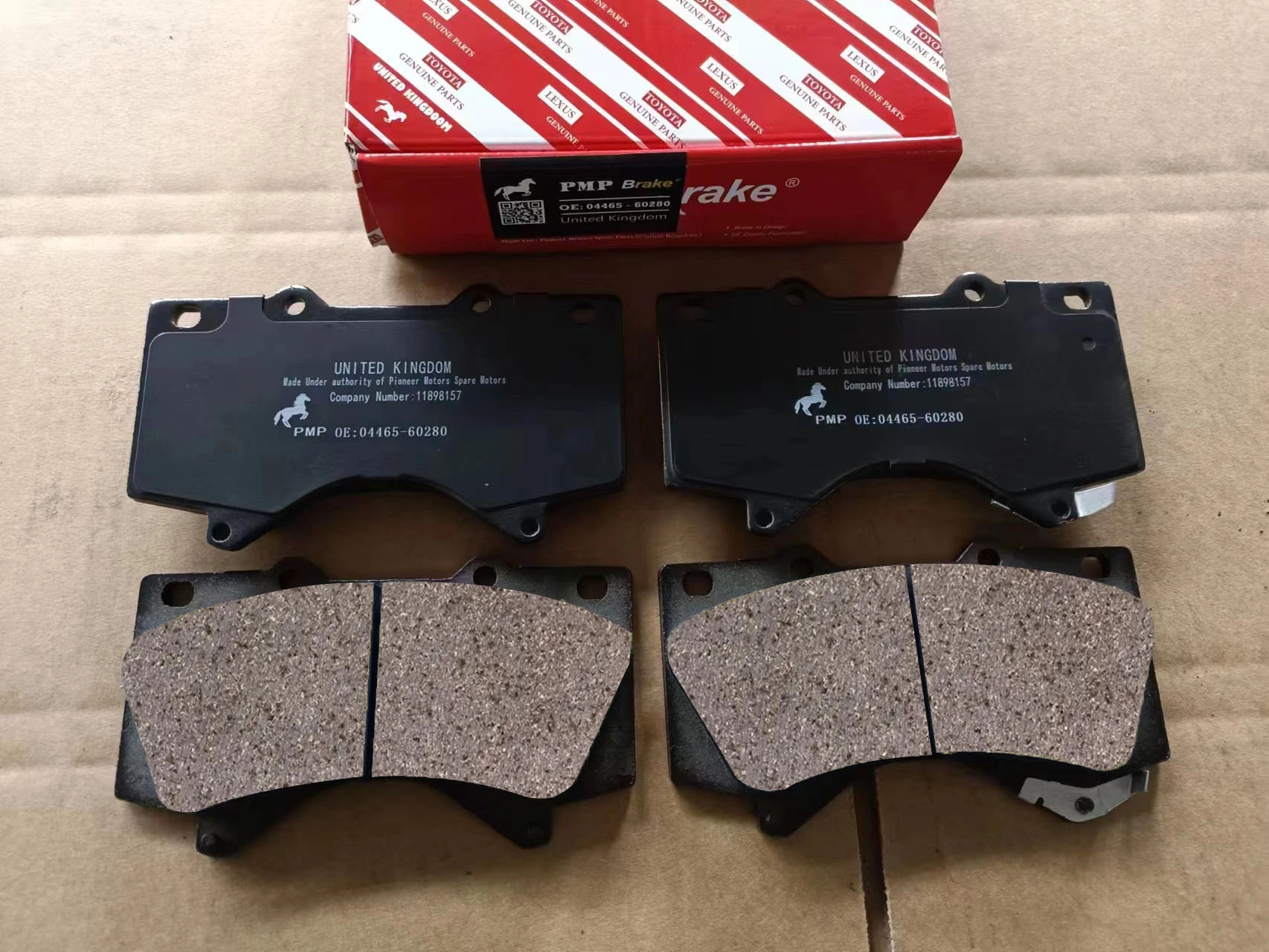
History of Brake Pads
The history of brake pads dates back to the late 1800s when ferodo, the first modern friction brake pad material, was invented. This marked a major development from earlier brake pads made of leather.
In the early 1900s, asbestos began being used in brake pads, providing better heat resistance. However, due to health concerns, asbestos was phased out of brake pads in most countries by the 1990s.
The development of new materials and compounds revolutionized brake pads in the mid-1900s. Ceramic compounds offered improved performance, while racing applications drove innovation for high-performance brake pads.
More recently, the focus has been on environmentally-friendly organic brake pads using compounds like rubber, kevlar, glass fiber, and carbon fibers. These provide the same level of performance with less impact on the environment.
Major innovations include the development of new friction materials, improved heat dissipation, reduced noise, and compounds optimized for different vehicle applications. Overall, brake pad technology has evolved enormously - from leather pads to high-tech materials for optimal stopping power.
SEMIMETALLIC BRAKE PADS
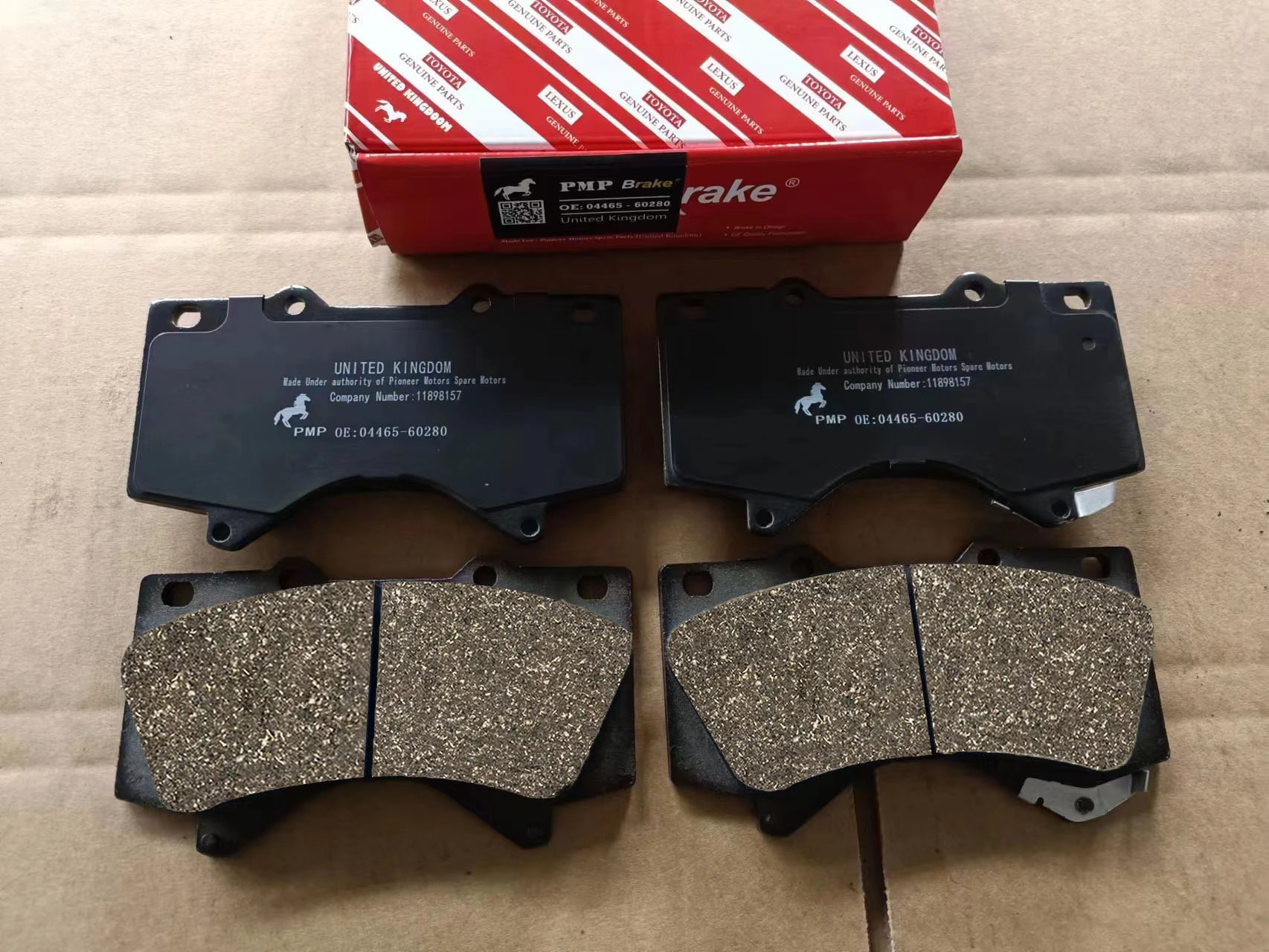
CERAMIC BRAKE PADS
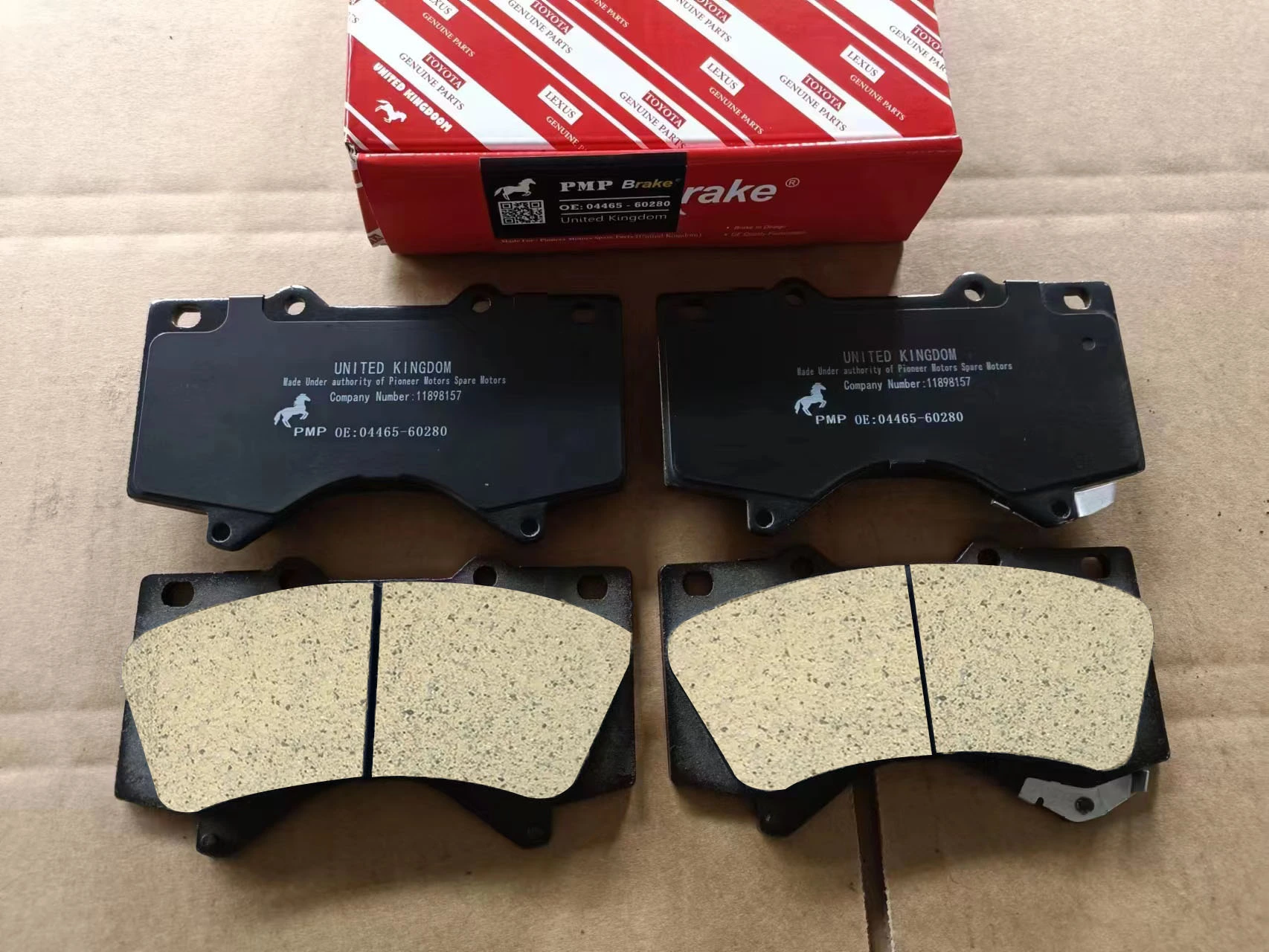
Brake Pad Materials
Brake pads are made from a variety of friction materials that provide the braking action by gripping the brake disc or drum. The most common materials used in modern brake pads include:
**Non-asbestos organic (NAO)**
These brake pads use a mixture of fibers, fillers, resins and bonding agents not derived from asbestos. Common materials include glass, rubber, Kevlar, carbon, copper fibers, and organic or ceramic fillers bonded by various resins. NAO pads offer moderate braking performance and low noise, but they tend to fade at high temperatures. They are the most commonly used replacement material for most vehicles.
**Ceramic**
Ceramic brake pads utilize ceramic fibers, fillers like copper and graphite, binding agents and little or no steel wool. They withstand heat better than NAO pads and are more durable, but are also usually noisier. While more expensive, ceramic pads offer strong braking power and fade resistance for high performance driving.
**Semi-metallic**
Semi-metallic pads use 40-65% steel or copper fibers bound together with fillers and resins. They offer high friction and fade resistance for hard braking, but also tend to be noisier with more brake dust. Semi-metallic pads are common in high-performance vehicles and heavy-duty applications.
**Sintered metal**
Sintered metal pads are made from metallic materials like copper, iron and steel bonded together through high heat and pressure. They can withstand extreme temperatures, have high friction, and are very durable. However, sintered metal pads also create noise and dust. They are most common in racing and high-demand braking applications.
The choice of brake pad material involves tradeoffs between factors like braking power, noise, dust, fade resistance and durability. Ceramic and semi-metallic pads offer the best stopping power and heat handling for aggressive driving, while NAO pads provide quieter everyday braking for normal driving conditions.
SEMIMETALLIC BRAKE PADS
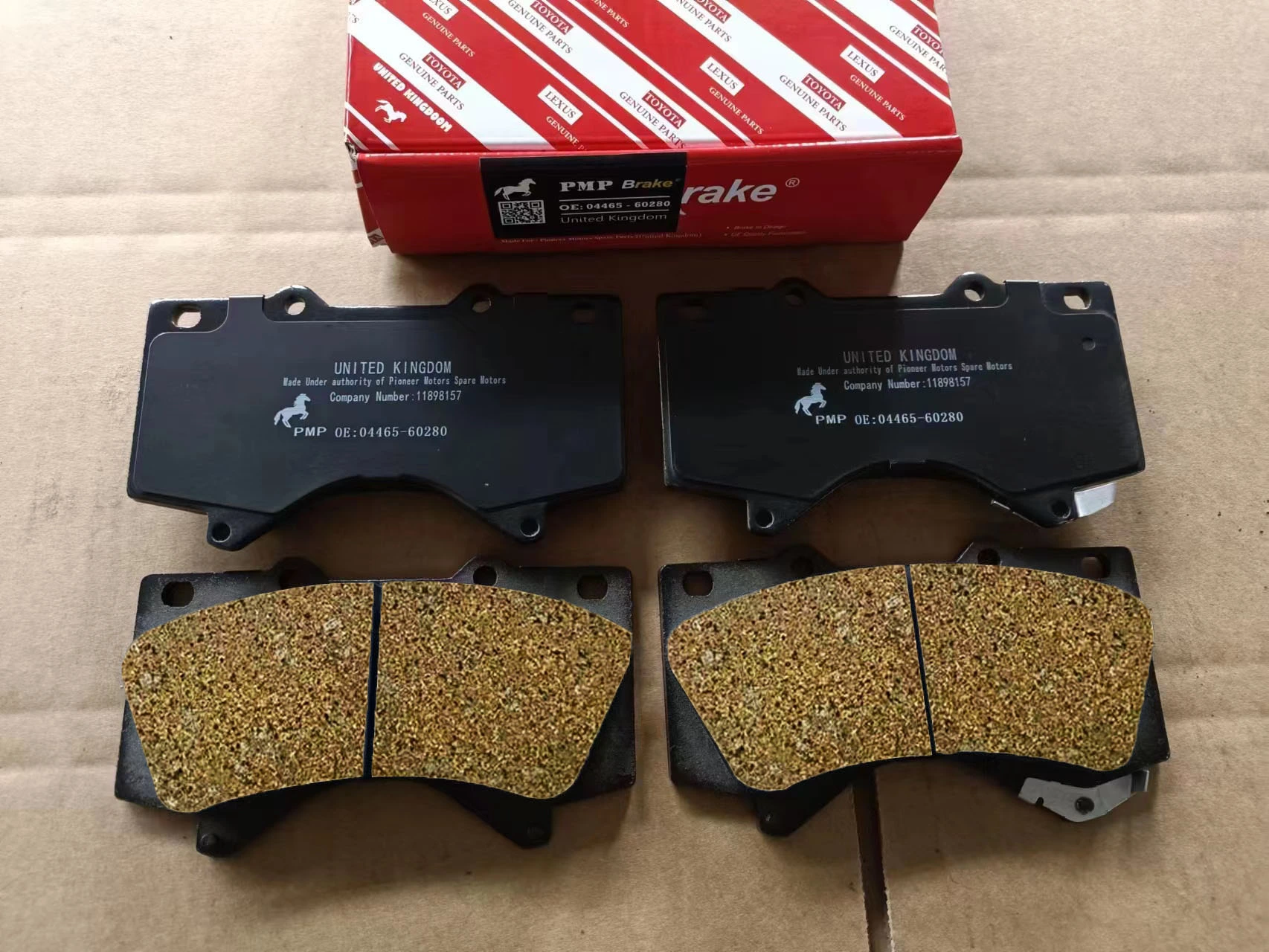
SEMIMETALLIC BRAKE PADS

Brake Pads Manufacturing Process
The manufacturing of brake pads involves several steps to ensure quality control and meet safety standards. Here is an overview of the main steps involved:
Mixing
The friction material ingredients, including binders, fillers, fibers, abrasives etc., are carefully measured and mixed together in industrial mixers according to the formulated recipe. The mixing process aims to achieve a uniform distribution of the ingredients.
Preforming
The mixed raw materials are then compressed into blocks of varying sizes and shapes depending on the target brake pad design. This preforming step provides the compacted material the initial shape.
Molding
The preformed block is then heated and molded into the final brake pad shape using hydraulic or mechanical presses and precision metal molds. High pressures are applied to form the contours and achieve the required density and surface finish.
Curing
After molding, brake pads undergo controlled heating or cooling cycles to cure the binding resins. This curing process hardens the pad material and sets the final properties. The parameters of temperature, duration and environment are closely controlled.
Finishing
Post-curing, the brake pads undergo several finishing processes like trimming, chamfering, surface grinding and even application of outer layers or underlayers. This provides the final dimensions, surface finish and pad assembly requirements.
Testing
Extensive testing is done at multiple stages and on final brake pads to ensure they meet all specifications for quality, performance, durability, noise etc. Standards organizations have detailed test protocols.
Quality Control
Automated inspection and quality control checks are implemented at various points in the manufacturing process to ensure consistency and eliminate defects. All processes and materials are closely monitored.
Brake Pads Testing and Certification
Brake pads must adhere to strict safety and performance standards before being approved for use in vehicles. There are several key tests conducted:
*FMVSS 105**
This SAE standard specifies minimum performance requirements for service brake systems in the United States. It involves stopping distance tests from 60 mph as well as heat fade and recovery tests.
**FMVSS 135**
This standard specifies requirements for light vehicle brake systems. It covers subjects like brake fluid viscosity, corrosion resistance, temperature performance, and hydrolytic stability.
**ISO 26867**
This international standard determines the friction coefficients and wear rates of brake pads during dynamometer testing. Pads are tested at varying speeds, pressures, and temperatures.
**AK Master**
The AK Master test rig puts brake pads through temperature cycles, water immersion tests, and varying pressures to validate performance. It simulates real world braking conditions.
**Noise Testing**
Brake pads undergo specialized acoustic test chambers to measure squeal and noise. Microphones pick up frequencies and decibel levels during simulated stops.
**Salt Spray Testing**
Brake pads are subjected to a salt spray chamber which creates a corrosive environment. This evaluates the corrosion resistance of the pad's materials.
**Dust Testing**
Brake pads are tested for their propensity to generate dust. The amount and chemical composition of dust produced is measured.
**Compound Testing**
Test vehicles are used to evaluate pad compounds in actual on-road conditions. Stopping distances, wear rates, noise, vibration, and other criteria are measured over thousands of stops.
Thorough testing and certification ensures brake pads meet the highest standards for safety, quality, and durability before being installed in vehicles. Manufacturers invest significant resources into product validation through rigorous procedures.
Automotive Applications
Brake pads have applications in various automotive vehicles, primarily for stopping or reducing speed. The major automotive applications include:
1- Passenger Vehicles: Most commonly found in cars, SUVs, vans, and light trucks for consumer transportation. Brake pads in passenger vehicles usually consist of semi-metallic or low-metallic formulations that balance braking performance, longevity, noise, and cost.
2- Commercial Vehicles: Used in heavier vehicles like large trucks, buses, and trailers which require more durable brake pads due to higher vehicle weight and frequent braking when loaded. Materials tend to be semi-metallic and low-steel.
3- High Performance: Sports cars and race vehicles use high friction formulas and modified compounds for maximum braking power under extreme conditions, but may trade off longevity. Materials include ceramics, carbon fiber, kevlar, and sintered metals.
4- Motorcycles: Motorcycle brake pads cater to high speeds, quick braking, wet conditions, and varying road types. Sintered metal compounds offer high friction but low heat resistance. Organic materials provide smoother engagement.
5- Aviation: Aircraft brake pads need to withstand high temperatures from rapid deceleration. Materials like carbon and sintered metal are common. Newer aircraft use carbon brakes which are lighter and more durable.
6- Rail and Mass Transit: Subways, trains, light rail rely on high friction and durable brake pads that can operate in dirty conditions. Semi-metals and low-steel compounds are regularly used. Asbestos-free organic materials are also common.
Proper brake pad selection depends on the vehicle type, operating conditions, performance needs, and other factors. Manufacturing focuses on creating formulations that meet the demands of each application.
Maintenance and Repair of brake pads
Brake pads require regular inspection and eventual replacement as part of routine vehicle maintenance. Most automakers recommend inspecting brake pads during oil changes or other scheduled service intervals. There are a few signs that indicate brake pads may need replacement:
**Squealing or grinding noises**
- when braking. This indicates the brake pad material has worn down completely in some spots.
**Vibration or shaking**
- in the steering wheel when braking. This can mean uneven pad wear.
**Longer stopping distances**
- As pads wear down, your brakes become less effective at slowing your vehicle.
- Brake pad **thickness** under 2-3 mm. Many pads have built-in wear indicators that screech when the pad material is nearly gone.
The typical brake pad replacement interval is 30,000-70,000 miles, varying by vehicle make and model. Aggressive drivers will need new pads more frequently. Pads should always be replaced in axle sets.
Replacing brake pads involves:
- Lifting the vehicle and removing the wheels.
- Removing the caliper assembly.
- Removing the old brake pads and any hardware.
- Installing the new pads and hardware.
- Lubricating necessary components.
- Re-installing the caliper.
New brake pads require a break-in period of a few hundred miles to transfer material onto the rotor surface for maximum braking power. Avoid heavy braking for the first 200 miles. Always consult your vehicle owner's manual for the proper pad break-in procedure.
Proper brake pad installation and maintenance is crucial for safe, effective braking. Follow your automaker's recommended service intervals and replace pads before they wear down completely.
Environmental Considerations
One of the main environmental concerns with brake pads is the materials they are made of. Older brake pads contained asbestos, which is a known carcinogen hazardous to human health. Thankfully, asbestos has been phased out of brake pads in most countries. Modern pads use materials like copper fibers, glass fibers, rubber compounds, and other man-made materials that are less harmful.
Brake pads produce dust that contains small particles from the pad material that can pollute the air. Some of the compounds in brake dust may be harmful to people and the environment if exposure levels are high. Proper disposal of used brake pads reduces environmental contamination.
Brake pads also contribute to noise pollution. The high frequency squeal from brakes is not just annoying, but increases noise levels that can potentially harm human health. Manufacturers continue to refine brake pad materials and shims to reduce brake noise. Ceramic and semi-metallic compounds generate less noise than the older organic pads.
When brake pads wear out, they generate waste that must be disposed of properly. Used pads contain heavy metals and other compounds that can leach into soil and water if sent to landfills. Many manufacturers and repair shops now recycle used brake pads. The materials can be recovered and used to create new brake components. Implementing closed-loop recycling helps minimize the environmental impact of brake pads.
Future Trends
The brake pad manufacturing industry will continue to evolve as new technologies emerge and regulations change. Some key trends to watch include:
**New Materials**
- Ceramic and semi-metallic materials are gaining popularity as they offer improved braking performance and longevity compared to organic pads. Manufacturers are continuing to develop and refine these materials.
- Carbon fiber and carbon ceramic composites are being researched as they can handle high temperatures with low brake fade. These exotic materials may become more commercially viable in high-end vehicles first.
- Nanotechnology and surface treatments can create pads with enhanced properties. Expect ongoing incremental improvements to friction materials as nano-engineering enables greater control of the composition.
**Sensors and Telematics**
- Built-in sensors will allow brake pads to monitor their own wear and communicate this data to onboard computers and telematics systems. This enables proactive maintenance and part replacements.
- Smart brake systems can integrate information about vehicle load, speed, road conditions, and driving style to modulate braking in real-time for optimized performance and longevity.
**Electric Vehicles**
- As electric vehicles gain market share, brake pads will be adapted to handle their unique braking demands. Regenerative braking systems that capture energy while slowing will reduce wear on friction pads.
**Autonomous Driving**
- Self-driving cars have different brake usage patterns compared to human drivers. Brake pads will need to handle these smoother braking profiles for long periods of sustained low-grade use.
**Outlook**
- Overall, the industry is expected to see steady, incremental growth as global vehicle sales expand. Manufacturers will continue investing in R&D and advanced automation to remain competitive. Brake pads will evolve to meet changing vehicle technologies, although fundamental materials and processes are unlikely to change radically. The future is in smarter, more adaptive braking systems.






